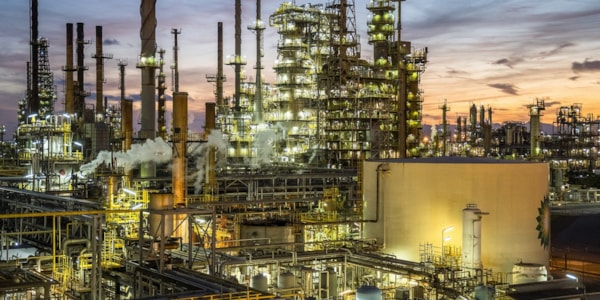The role of SAF feedstocks and technologies in the decarbonization of aviation

Sustainability is a focus in the new era in aviation, pushing industry members to be inventive and productive with the push for net zero carbon emissions industry-wide by 2050. Sustainable Aviation Fuel, hydrogen and electricity have all been vital in the decarbonization of aviation, targeting areas where aviation has the largest carbon footprint, like with fuel. SAF plays a critical role in the decarbonization of aviation fuel. There are more SAF options viable for more aircraft, now available for use in all turbine engines, including mid and long-range aircraft. Alternative fuel sources have been in testing and many varieties are now being accepted and approved for use.
The production of SAF begins with one of the five main groups of materials: oils and fats, sugar and cereal, municipal solid waste, wood and agricultural residue, and renewable energy and carbon. A component from one of the main groups is used to replace a proportion of the crude oil feedstock.
Each feedstock will use a different production technology and each specific technology pathway will require approval from the fuel standard body ASTM before it can be deployed on a commercial scale. SAF production can be done using standalone units or through co-processing.
Standalone units use the feedstock to produce a type of synthetic kerosene, which is then blended with conventional jet fuel to create SAF. In this method of producing SAF through co-processing, nearly five percent of sustainable feedstocks are in production by the fossil feedstocks through hydro-processing in the refinery.
The feedstock is converted to synthetic kerosene in a biorefinery and then certified to an annex in ASTM D7566 standard. The synthetic kerosene is blended up to 50 percent with conventional jet fuel and then certified to ASTM D1655 or Defense Standard 91-091 to be supplied as a conventional Jet A/ Jet A-1 fuel. There are currently two technology pathways and feedstocks approved for the production of SAF through co-processing.
The feedstocks closest to the energy density in fossil fuels, which consist of most of the current SAF on the market, are made using hydrotreated esters and fatty acids (HEFA). This is driven by the cost and availability of the feedstocks. The primary feedstocks include waste fats, greases and oils, and following pre-treatment can be processed in the standard hydrocracker units.
Currently, HEFA synthetic paraffinic kerosene is the only commercial pathway used for the large-scale production of SAF. The feedstocks for HEFA are limited and there is currently a great need for a rollout for commercial large-scale sustainable feedstock use.

Other high-energy crops are being tested and approved as HEFA feedstocks, like algae, camelina, pennycress, tallow tree and carinata. Cover crops like carinata, which are grown for the protection and enrichment of the soil, are a good alternative feedstock since they do not require additional land and can contribute to other sustainable farming practices by supporting soil carbon accumulation, soil quality and biodiversity. BP has entered into a long-term strategic offtake and market development agreement with Nuseed to purchase carinata oil.
As SAF is being tested and approved, more flights are flying on SAF produced from the HEFA pathway. This will continue to limit the already limited feedstock and eventually push SAF developers to transition to a different source. SAF can be produced from alcohol to jet, municipal solid waste and second-generation biomass will become increasingly used as a source as HEFA feedstock supplies dwindle.
Alcohol to jet (AtJ) is an approved pathway for sustainable fuel. In production a sugary, starchy biomass like sugarcane or corn grain is converted into ethanol and other alcohols through a fermentation process. After fermentation, it can be shipped or piped before it is converted to fuel. These feedstocks can be grown and transported easily, but the sugarcane must be processed into ethanol within 48 hours of being cut. Strategic planning can be a way to lower the logistical costs of production, reducing carbon emissions from transport and improving infrastructure by placing the ethanol plants close to the feedstock production mills and refineries.
In places like America, corn and sugarcane are being used as feedstock commercially for fuel production. There is a greater demand from other transportation modes, like for use in ground fuels and petrochemicals, which means there is still limited feedstock available for aviation. There are currently no commercial synthetic kerosene plants using the AtJ pathway.

The AtJ pathway is also not the best method to reduce carbon intensity when compared to other technologies. The implementation of these solutions, like carbon capture and storage technology, will be beneficial in lowering greenhouse gas emissions. The other options will evaluate the use of biogas instead of natural gas in mills as well as converting farm machinery to run on biofuels in place of fossil fuels.
Fisher-Tropsch (FT) for municipal solid waste (MSW) is an approved pathway and does not have a limited feedstock, but there are high costs for the development and use of this method. SAF produced from MSW using FT technology has fewer environmental gains, stemming mainly from the fact that it would have stayed a waste if left alone to sit in a landfill. The World Bank notes that the world created over two billion tons of MSW annually. This number is expected to grow to 3.4 billion tons by 2050.
MSW is widely available around the world and can be used at a lower cost than other raw materials. In some regions, it has a lower cost than other raw materials. Aviation will still compete with other sectors for the use of MSW in some regions.
RELATED STORIES:
Airbus Canada, Pratt & Whitney and SAF Consortium collaborate on next-gen SAF
First-ever SAF Research & Development center opening in Washington state
Other feedstocks are being tested, but many have drawbacks like cost, lack of materials or competition for use with other sectors. One of the most promising pathways might be power-to-liquid (PtL) but the technology is still relatively new. Renewable electricity is used in an electrolysis process to extract the hydrogen from water and green hydrogen is the first used to convert carbon dioxide to carbon monoxide By using FT synthesis technology, the carbon monoxide and green hydrogen can be converted into wax to be upgraded to synthetic kerosene.
Long-term, SAF will be the fuel of the future. SAF, electricity and hydrogen will become the common fuel source. Aviation is one of the hardest sectors to work to reduce fuel lifecycle carbon emissions and the use of SAF and other alternative energy methods is currently the only way to decarbonize the industry at the pace needed.
BP is working with stakeholders across the energy supply chain to meet the SAF demand. The industry is facing concerns over the carbonization of aviation head-on, with new technology and adaptions to current tools. SAF is becoming more commonly used and alternative sources are being explored. The industry will continue to work toward a greener tomorrow and an emission-free airline by 2050.
Contact
Name: Haley Davoren
, Digital Content Manager
Company: GlobalAir.com
Website: https://globalair.com
Email: [email protected]
Phone: 502-456-3934
©2023 GlobalAir.com, Haley Davoren. All rights reserved.

Recent Comments